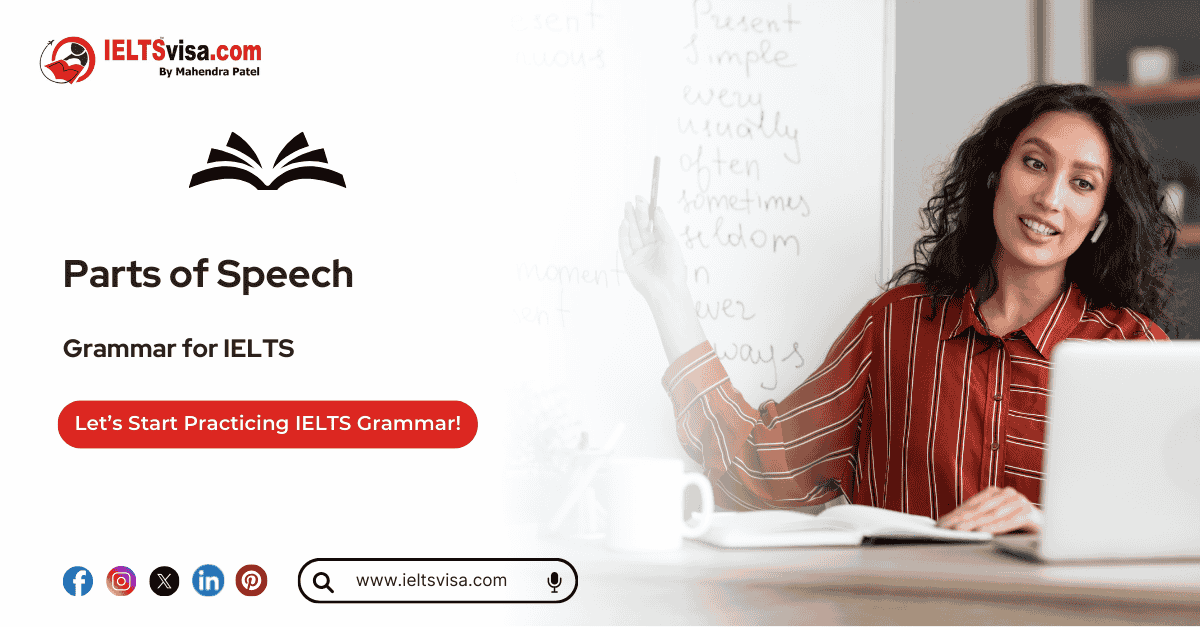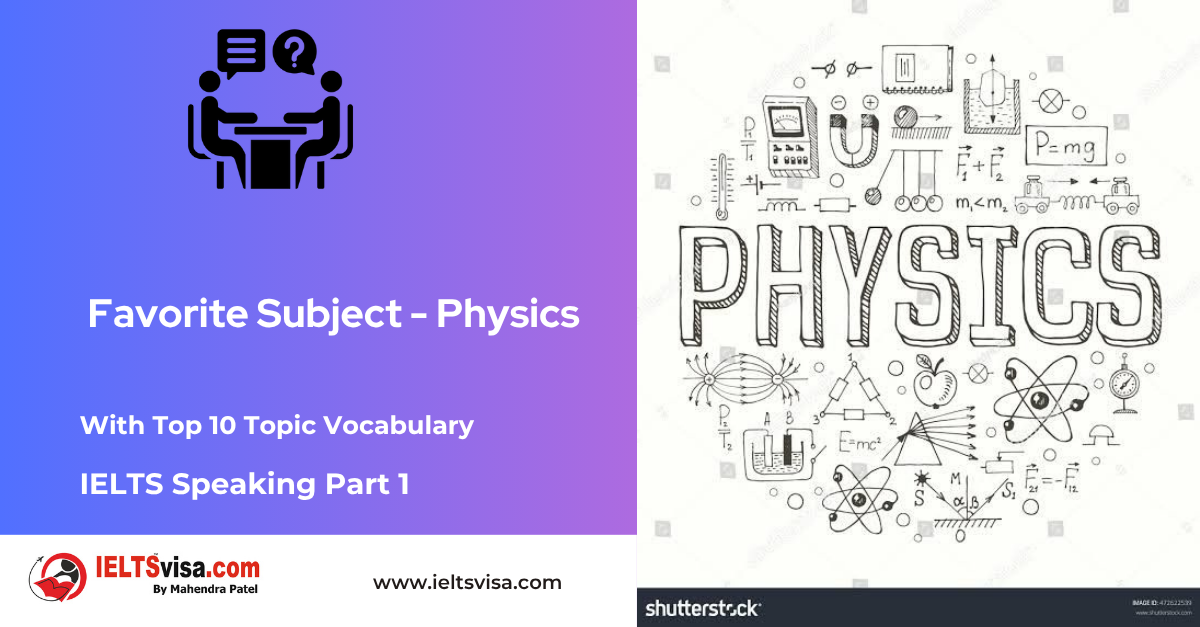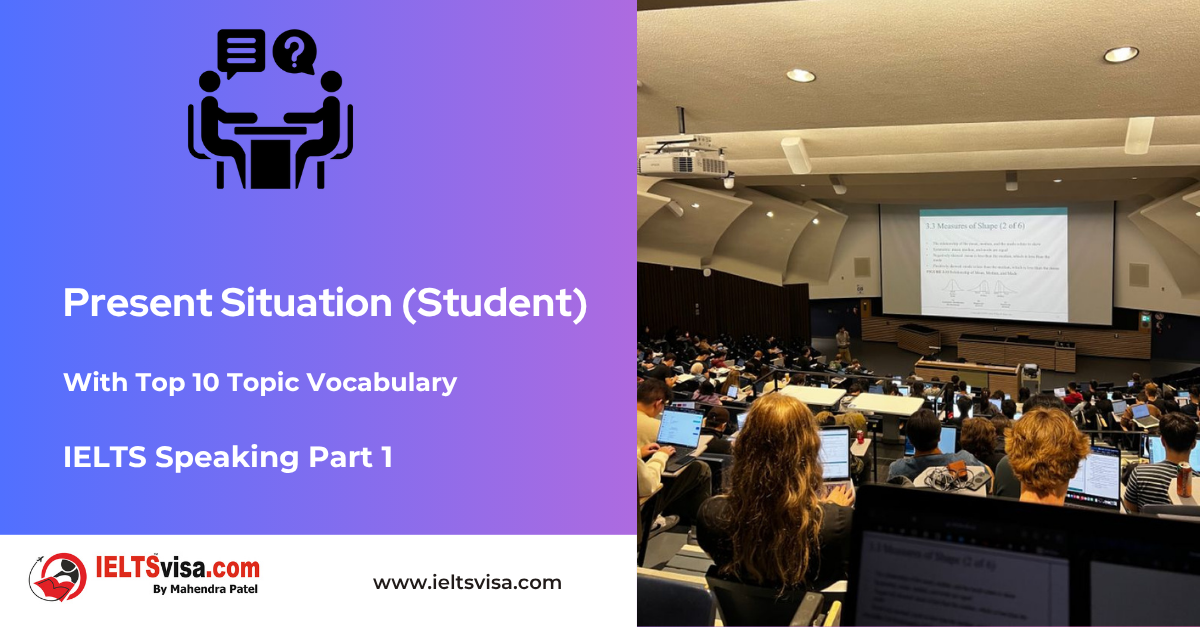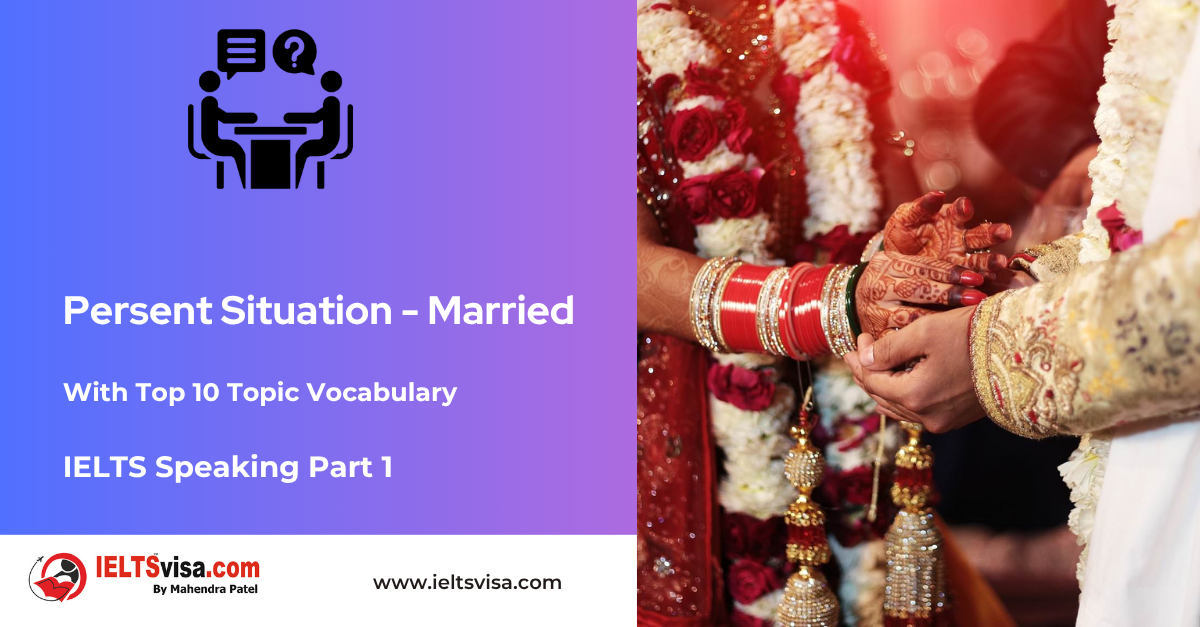Part of Speech
Grammar for IELTS
Part of Speech – Definition, 8 Types, and Examples
Part of Speech
In English grammar, every word belongs to a specific category based on the role it plays in a sentence. These categories are known as parts of speech. Learn about the definitions, types, and examples of Part of Speech in this article.
Table of Contents
1. What is Part of Speech?
2. Definition of Part of Speech
3. Types of Parts of Speech with Examples
4. Sentence Examples for the 8 Parts of Speech
5. Practice Exercise: Test Your Understanding of Part of Speech
6. Frequently Asked Questions on Part of Speech
What is Part of Speech?
Part of Speech is among the foundational concepts of grammar taught early in English language learning. They categorise words based on their function in a sentence. Some words can serve multiple roles, depending on the context in which they are used.
Definition of Part of Speech
-
-
The Oxford Learner’s Dictionary defines Part of Speech as “classes into which words are divided based on their grammatical roles, such as nouns, verbs, adjectives, etc.”
-
The Cambridge Dictionary offers a similar definition: “Groups into which words are categorised, such as noun, verb, and adjective.”
-
Types of Part of Speech with Examples
English has eight primary Parts of Speech: nouns, pronouns, verbs, adverbs, adjectives, prepositions, conjunctions, and interjections.
1. Nouns
Nouns name people, places, things, or ideas. They can be common (generic) or proper (specific).
Examples of nouns in sentences:
-
- The dog is barking. (thing)
- Emma lives in Paris. (person, place)
- We value honesty. (idea)
2. Pronouns
Pronouns replace nouns in a sentence. Types include personal, possessive, relative, and indefinite pronouns.
Examples of pronouns in sentences:
-
- She loves ice cream. (Personal)
- Is this yours? (possessive)
- Who is at the door? (relative)
- Nobody was home. (indefinite)
3. Verbs
Verbs express actions, occurrences, or states. These action words form the core of most sentences.
Examples of verbs in sentences:
-
- He runs every morning.
- The flowers are blooming.
- Do you know the answer?
4. Adverbs
Adverbs modify verbs, adjectives, or other adverbs. They provide details about time, manner, degree, place, or frequency.
Examples of adverbs in sentences:
-
- She sings beautifully. (manner)
- We will meet tomorrow. (time)
- He rarely makes mistakes. (frequency)
5. Adjectives
Adjectives describe or modify nouns, providing more detail about their characteristics.
Examples of adjectives in sentences:
-
- The tall man waved at us.
- It was a delicious meal.
- The colourful rainbow appeared after the rain.
6. Prepositions
Prepositions link nouns or pronouns to other words in a sentence, often indicating direction, place, or time.
Examples of prepositions in sentences:
-
- The keys are on the table.
- She walked through the park.
- We stayed until midnight.
7. Conjunctions
Conjunctions connect words, phrases, or clauses. Types include coordinating, subordinating, and correlative conjunctions.
Examples of conjunctions in sentences:
-
- I wanted to go, but I was too tired.
- She stayed home because it was raining.
- Neither Sam nor Kate showed up.
8. Interjections
Interjections express strong emotions or reactions and are often followed by exclamation marks.
Examples of interjections in sentences:
-
- Wow! This cake is amazing.
- Oh! I forgot my wallet.
- Yay! We won the game.
Sentence Examples for the 8 Part of Speech
1. Noun – Sarah is reading a book.
2. Pronoun – Is this her jacket?
3. Verb – The dog barked loudly.
4. Adverb – The train arrived late.
5. Adjective – The view from the hill was breathtaking.
6. Preposition – The cat is under the table.
7. Conjunction – I stayed home, yet I managed to finish my work.
8. Interjection – Alas! The opportunity is lost.
Practice Exercise: Identify the Part of the Speech
Identify the Part of Speech for the highlighted words:
1. My sister is very kind.
2. They quickly ran to the store.
3. Wow! This is fantastic news.
4. The dog jumped over the fence.
5. I believe she is honest.
Check your answers:
1. Sister – Noun
2. Quickly – Adverb
3. Wow – Interjection
4. Over – Preposition
5. Believe – Verb
Frequently Asked Questions on Part of Speech
Q1. What is Part of Speech?
Part of Speech is a class of words that have specific grammatical roles within a sentence, contributing to its structure and meaning.
Q2. How many Parts of Speech are there in English?
There are eight primary Parts of Speech.
Q3. What are the 8 Parts of Speech?
The categories are nouns, pronouns, verbs, adverbs, adjectives, prepositions, conjunctions, and interjections.

Our Books
Master IELTS Speaking Part 1
IELTS Writing Task 1 Book
IELTS Writing Task 2 Book
Practice IELTS Other Modules
IELTS Listening
The IELTS Listening test assesses how well you can understand spoken English in various contexts. It lasts about 30 minutes and is divided into four sections with a total of 40 questions. The listening tasks become increasingly difficult as the test progresses.
IELTS Academic Reading
The IELTS Academic Reading section assesses your ability to understand and interpret a variety of texts in academic settings. It is designed to evaluate a range of reading skills, including skimming for gist, reading for main ideas, reading for detail, understanding inferences, and recognizing a writer's opinions and arguments.
IELTS Speaking
The IELTS Speaking test assesses your ability to communicate in English on everyday topics. It lasts 11-14 minutes and consists of three parts: introduction, cue card, and a discussion based on the cue card topic.
IELTS General Reading
IELTS General Reading tests your ability to understand and interpret various types of texts. Here are some key areas and types of content you can expect to encounter in the reading section, along with tips for effective preparation.
IELTS Academic Writing Task 1
In IELTS Academic Writing Task 1, you are presented with a visual representation of information, such as graphs, charts, tables, or diagrams, and you are required to summarize, compare, or explain the data in your own words.
IELTS General Writing Task 1
In IELTS General Writing Task 1, you are required to write a letter based on a given situation. The letter can be formal, semi-formal, or informal, depending on the prompt. Here’s a breakdown of the key components to include in your letter
IELTS Academic Writing Task 2
In IELTS Academic Writing Task 2, you are required to write an essay in response to a question or topic. Here’s a guide to help you understand the essential elements of this task
IELTS Exam Tips
To succeed in the IELTS exam, practice regularly, familiarize yourself with the test format, improve your vocabulary, develop time management skills, and take mock tests to build confidence.
Grammer for IELTS
Grammar is the foundation of effective communication in English. Understanding tense usage, subject-verb agreement, and sentence structure enhances clarity and coherence in writing and speaking.
Vocabulary for IELTS
Vocabulary plays a crucial role in the IELTS (International English Language Testing System) exam, especially in the Speaking and Writing sections. Here’s an overview of why vocabulary is important and how it impacts your performance
RECENT IELTS SAMPLES QUESTIONS AND ANSWERS
IELTS Speaking Part 1 – Favourite Sujbect – Physics
IELTS Speaking Part 1 - Favourite Sujbect - Physics Q: What is your favourite subject? A: My favourite subject...
IELTS Speaking Part 1 – Present Situation (Student)
IELTS Speaking Part 1 - Present Situation (Student) Q1: Are you a student or do you work?A: I’m a full-time...
IELTS Speaking Part 1 – Present Situation – Employee – as an International Student and Social Worker
IELTS Speaking Part 1 - Present Situation - Employee - as an International Student and Social Worker Q1: Are...
IELTS Speaking Part 1 – Persent Situation – Employee- as an Electric Engineer
IELTS Speaking Part 1 - Persent Situation - Employee- as an Electric Engineer Q1: What do you do for a...
IELTS Speaking Part 1 – Persent Situation – Employee – as an Software Engineer
IELTS Speaking Part 1 - Persent Situation - Employee - as an Software Engineer Q1: What do you do for a...
IELTS Speaking Part 1 – Persent Situation – Married
IELTS Speaking Part 1 - Persent Situation - Married Q1: Are you married?A: Yes, I am married. My spouse and I...




















